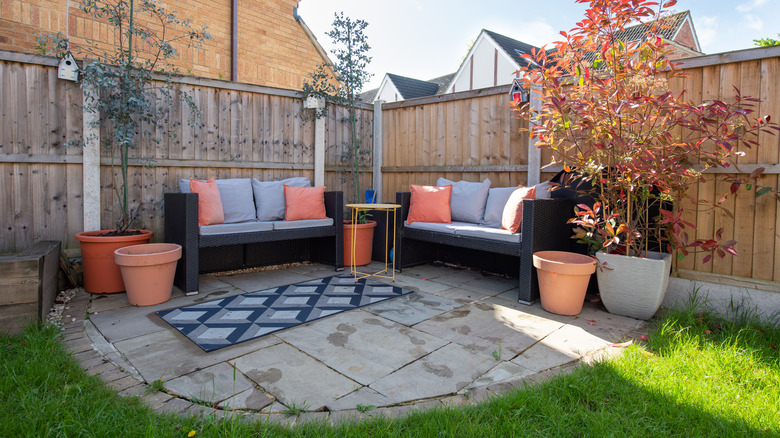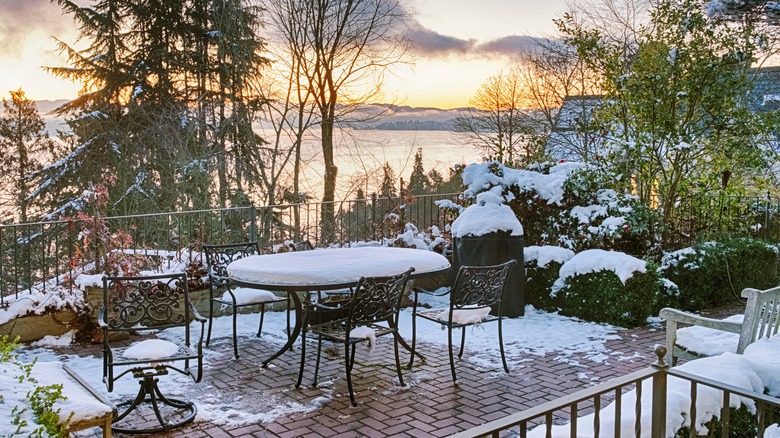The Patio Material You'll Want To Select If You Get A Lot Of Snow
It's quite nice to have a patio outside as a place to spend time and relax in your own yard. A patio is a little different than a deck, as it's situated on the ground floor, and is usually a cheaper option. Additionally, patios are great to add because they're relatively cheap to install, but are one of those additions that can add a lot of value to your home.
The first part of making the perfect patio is getting the base established. While you can use gravel, something solid and level offers a lot more stability and a prettier design. However, you need to think about what works best in cold weather. Generally, you want to avoid things that are slippery. Avoiding these materials is a good idea anywhere precipitation is common, as rain can make for a dangerous situation, but ice is even scarier with slippery base materials. Steer clear of products like wood, porcelain, and ceramic outside, unless you're going to put a rug or mat down to help prevent sliding.
You also want to consider materials that do best in lower temperatures. The problem with cold weather isn't the temperature directly. Instead, it's the fact that the colder it gets, the more likely the water in and around your patio will freeze. As it freezes, it expands, putting a lot of pressure on your flooring and causing cracks. Thankfully, there are plenty of ways to prevent this type of cracking, and that mainly boils down to choosing the right materials.
The best options for patio materials in cold weather
You may think, in a cold climate, you're limited when it comes to the best patio materials for low temperatures, but that's not really the case. While not every material works, there are plenty of great choices to pick from. When picking out products for an area that gets a lot of snow, consider small, but individual, materials. So instead of a large slab of concrete, you may want to use pavers. For the most part, standard concrete isn't a great option. Thanks to freezing and thawing cycles, it cracks easily and then you must replace the entire patio. While concrete pavers can also crack, they are less likely to do so, as there is breathing room between the stones to help with expansion. You can also replace an individual paver instead of your whole patio if one does crack, making it much more cost-effective. Another positive for pavers is that it's easy to set up your patio yourself, so you can save some money and have a unique design.
The same is true with any other material. Instead of buying one solid flooring, consider breaking it up by using pavers. A flagstone version is another good alternative. They aren't quite as durable, and are a bit pricey, but they are non-slip, which makes them ideal for icy temperatures.
Brick pavers are another great option. While they don't handle incredibly cold temperatures, they're pretty durable. Like other pavers, it's easy enough to replace as needed and they're cheap, making them a quality material for your patio when you're on a budget. Another positive is that they're made from clay, which makes them a sustainable and recyclable option for your yard.

